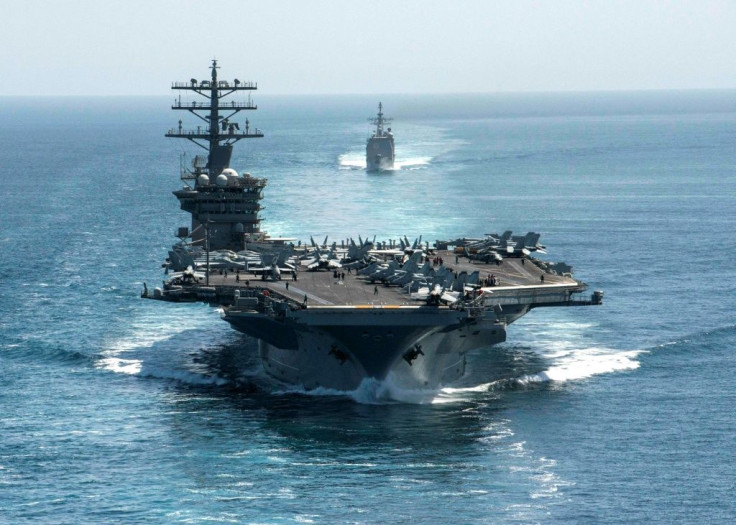US Navy Denies Carrier Group Moved Into Gulf After Any 'Threats'
A US aircraft carrier group has moved back into the Gulf region, but a navy spokeswoman said Saturday its return was not triggered by any "threats" after the killing in Iran of a top nuclear scientist.
Tensions in the region are extraordinarily high after the assassination Friday of Mohsen Fakhrizadeh, an act still unclaimed but which Iran has blamed on close US ally Israel.
But naval commander Rebecca Rebarich, a spokeswoman for the US 5th Fleet, told AFP the return Wednesday of the carrier group led by the nuclear-powered USS Nimitz was unconnected to any "specific threats."
"There were no specific threats that triggered the return of the Nimitz Carrier Strike Group," she said in a statement.
"The return of Nimitz is centered on maintaining CENTCOM's ability to remain postured and prepared to help preserve regional stability and security," Rebarich said, referring to the US Central Command.
The Pentagon said earlier that the carrier group would be providing combat support and air cover as the military withdraws thousands of troops from Iraq and Afghanistan by mid-January, under orders from President Donald Trump.
About 2,000 troops will be pulled from Afghanistan and 500 from Iraq, leaving roughly 2,500 in each country.

The flotilla led by the Nimitz -- one of the world's largest warships -- had recently joined Australia, India and Japan in scheduled exercises in the Arabian Sea.
The 5th Fleet's Twitter account showed pictures of the Nimitz's air wing conducting flight operations there Saturday.
Carrier groups typically include a cruiser, a destroyer squadron and an air wing.
Nimitz-class carriers are more than 1,000 feet (300 meters) long, have a crew of more than 6,000, and carry up to 90 helicopters and fixed-wing aircraft.
bbk/dw
© Copyright AFP 2024. All rights reserved.





















